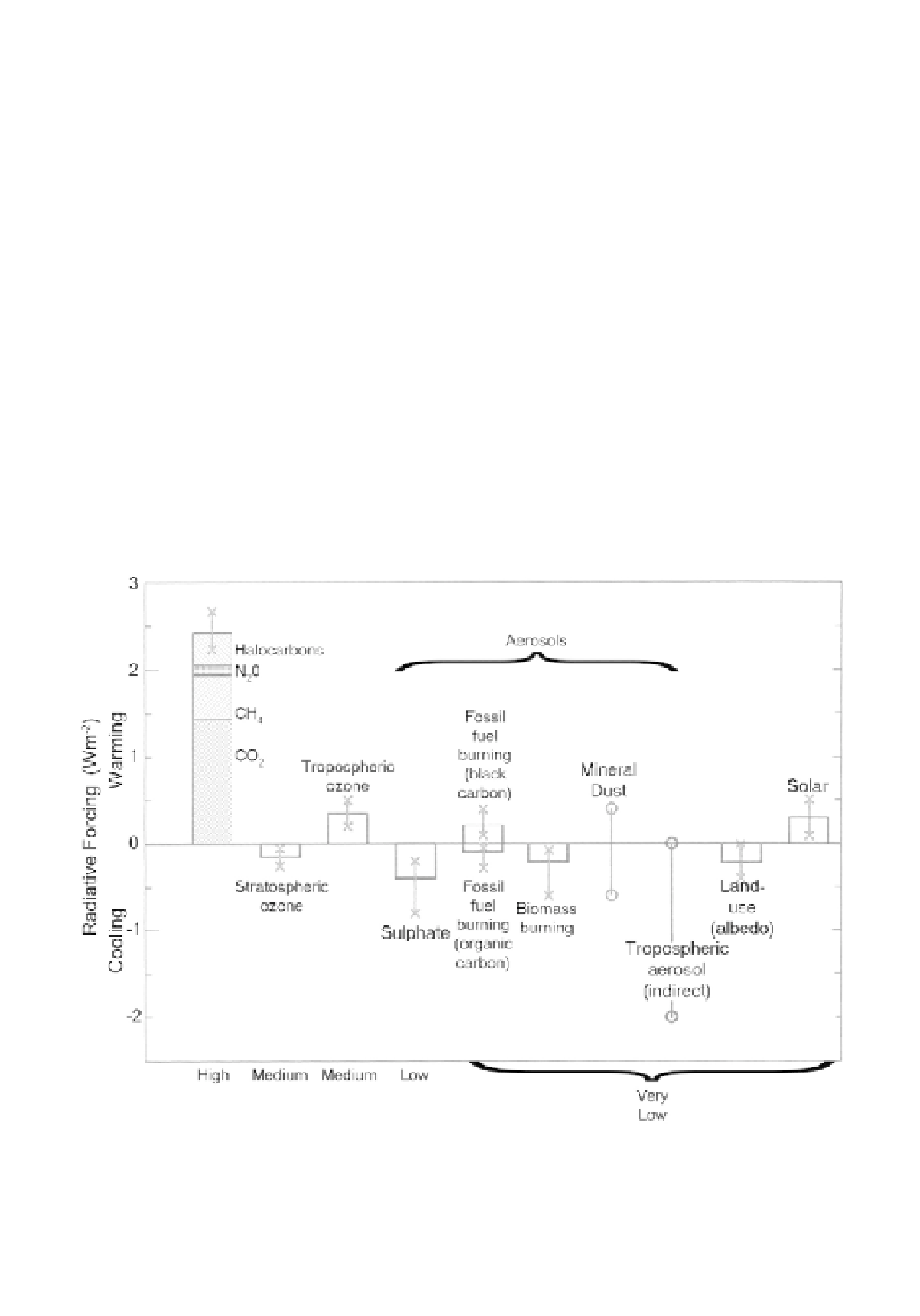Geoscience Reference
In-Depth Information
Table 13.3
Percentage apportionment of radiative forcing
due to greenhouse gas increases.
The increase in global temperature forcing by the
release of CFCs is particularly worrying. Ozone, which
at high altitudes absorbs incoming short-wave radiation,
is being dramatically destroyed above 25 km in the
stratosphere (see Chapter 2A.7) by emissions of H
2
O and
NO
x
by jet aircraft and by surface emissions of N
2
O by
combustion and, especially, of CFCs. It is estimated that
CFCs are now accumulating in the stratosphere five times
faster than they can be destroyed by ultraviolet radiation.
Ozone circulates in the stratosphere from low to high
latitudes and thus the occurrence of ozone in polar regions
is diagnostic of its global concentration. In October 1984,
an area of marked ozone depletion (the so-called 'ozone
hole') was observed in the lower stratosphere (i.e. 12
to 24 km) centred on, but extending far beyond, the
Antarctic continent. Ozone depletion is always greatest
in the Antarctic spring, but in that year the ozone con-
centration was more than 40 per cent lower than in
October 1977. By 1990, Antarctic ozone concentrations
CO
2
CH
4
CFCs Stratospheric N
2
O
H
2
O
*
Since 1795
61
17
12
6
4
1980 to 1990
56
11
24
4
6
Note
:
*
From the breakdown of CH
4
.
contribution decreased to 56 per cent, with CFCs
contributing 24 per cent and methane 11 per cent. For
the entire period since
AD
1765, the CO
2
contribution
is about 60 per cent out of an estimated 2.4 W m
-2
total
greenhouse gas forcing, methane 20 per cent, CFCs
12 per cent and nitrous oxide 6 per cent. Figure 13.14
provides a summary of the global annual mean forcing
from 1850 to 2000 and the level of confidence that can
be ascribed to each factor.
3
Aerosols
Halocarbons
N
2
O
2
Fossil
fuel
burning
(black
carbon)
CH
4
1
CO
2
Tropospheric
ozone
Mineral
Dust
Solar
0
Stratospheric
ozone
Land-
use
(albedo)
Fossil
fuel
burning
(organic
carbon)
Biomass
burning
-1
Sulphate
Tropospheric
aerosol
(indirect)
-2
High
Medium Medium
Low
Very
Low
Level of Scientific Understanding
Figure 13.14
Estimates of global mean radiative forcing (W m
-2
) due to changes in concentrations of greenhouse gases and
anthropogenic aerosols (pre-industrial, about 1750 to about 2000) and to natural changes in solar output (1950 to the present). The
error bars indicate the uncertainty ranges. The level of scientific understanding is considered high for greenhouse gases, medium for
ozone, low for sulphate and very low for other factors to the right on the graph.
Source
: Adapted from Ramaswamy
et al
., in Houghton
et al
. (2001). Reproduced by permission of the IPCC and Cambridge University Press.













